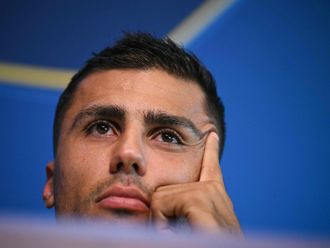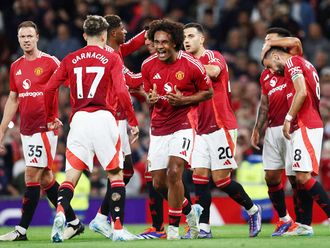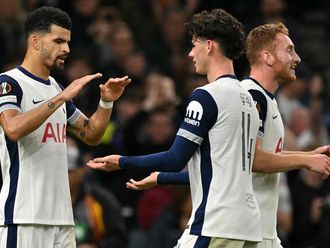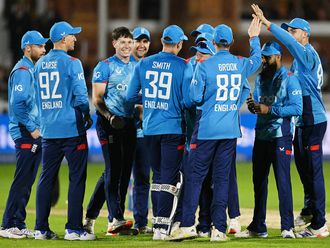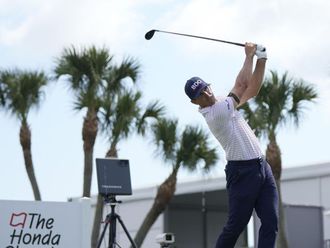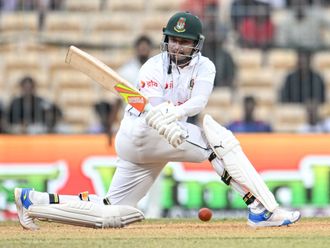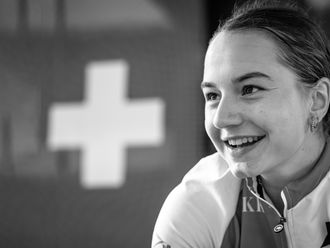London: On June 14 an unhyped striker, neither big nor strong and with no obvious “best position”, who three years ago was playing against Rochdale and Hartlepool in League One, could start for England against Italy in Manaus.
“If I was a betting man, would I have bet on Adam being our first graduate to play in a World Cup? Probably not,” says Huw Jennings, the former Southampton academy director. “What that tells you is how bloody hard he has worked.”
Adam Lallana always had ability but also obstacles in his way: heart defect, a late physical development, club in administration, the lower division years. He is the slowest-burning of Southampton’s success stories and the one whose happy ending leaves the warmest glow.
Gareth Bale, Theo Walcott, Alex Oxlade-Chamberlain, Nathan Dyer; lately Luke Shaw, Calum Chambers, James Ward-Prowse; next watch out for Harrison Reed. Quite a crop. Jennings is now at Fulham, overseeing another development revolution after the golden talents grouped on the south coast.
“Recruitment is the basis of any youth programme,” he says. “You’ve got to find the right youngsters with the right families and people around them, and put them into a culture where they’ll be challenged to develop.” Lallana’s parents, Dave and Sharon, were selfless and supportive.
Lallana was 11 when he arrived from Bournemouth’s academy. “Adam was one of those boys who’s so technically good from a young age that he needs to be stretched and the family realised that and let him come to us,” says Jennings. He found himself among peers with more eye-catching gifts: Bale had his running power, Walcott his pace, Dyer his trickery.
Referring to Bale, Walcott and Oxlade-Chamberlain (who emerged later), Lallana, 25, reflects: “They had that X-factor from an early age. I had to work that bit harder. People would maybe think I’m a different type of player, technical and a bit smaller.”
Jennings points out: “His sister was a talented athlete and he was always very good in the air. He had a good spring for his size and that gave him the power base to get much quicker as his body matured — jump tests are a good way to predict how fast someone might become.”
An academy with more rigid ideas might not have nurtured him but Jennings’ belief is “players fundamentally develop themselves, with guidance — and Adam had that drive that’s either in a youngster or not.”
On the pitch, his subtleties were appreciated by Georges Prost, the old French youth guru hired as under-18s coach by Southampton’s former owner Rupert Lowe.
“Georges introduced 4-2-3-1 and it suited Adam down to the ground. He could play as a No.10, with Dyer and Walcott wide and David McGoldrick, a powerful striker, ahead. He would link so well with them. He has that ability, between the lines, to take up positions to receive the balls that are difficult to defend, he takes his angles off other players and scans and knows his options before the ball comes. Receiving is a real skill and Adam always had great receiving skills.
“English players, midfielders in particular, are very stiff when they receive the ball. They don’t receive on their back foot enough, don’t open their shoulders or scan play, but Adam did those things and had a great Cruyff turn to escape trouble,” Jennings says.
“When you look back at those qualities, it seems obvious he was going to make it, but at the time 4-2-3-1 was still unusual and it was less easy to see where you’d play Adam in a 4-4-2. He was a player — to use that ugly phrase — ahead of his time.”
At 18 came a shock. During pre-season, the academy players wore 24-hour cardio trackers. Lallana’s readings showed a sudden spike in the middle of the night. His heart soared to a potentially catastrophic 230 beats a minute. “His heart effectively had an extra ‘choke’ in it and his two ‘chokes’ were sparking off each other to cause accelerations. If he hadn’t worn the trace there’s every chance it wouldn’t have been detected. It was a worrying time for him.”
Lallana needed keyhole surgery and had to stop playing for months. Walcott and Bale left, Southampton were relegated to the third tier and entered administration. Lallana, though he says he was too young to worry financially, remembers the calls telling players they wouldn’t be paid. Yet he was glad he remained, ignoring interest from Premier League suitors. “I needed regular football and physically [playing in the lower leagues] helped me.”
Captain and 12 months into a five-year contract, he said he has never wanted to leave his “special club”. Even before promotion to the Premier League in 2012, his view was: “If you can tell me now I would never leave Southampton, I could honestly say I have had a good career.”
The club’s determination to keep him is likely to be tested. He has only three caps but is prominent in Roy Hodgson’s World Cup planning. The manager says: “He’s been underrated for many years. A lot of us have come to terms with that, particularly over the past season when his form has been outstanding.”
Southampton fans sing: “He plays on the left, he plays on the right, Adam Lallana makes Messi look ...” Well, let’s just say not that good.
Lallana has started in six roles in the Premier League this season, with games split almost exactly between left side, right side and middle. He’s one of the top players in 2013-14 for key passes, dribbles and fouls won; has one of the best combined goals and assists totals for an English player and leads the table for winning possession in the final third. When “the high press” is an important weapon, Lallana is valuable. But his core appeal will always be playing craft.
Nigel Adkins, the former Southampton manager, says: “You’d pay to watch him in training. What he does sometimes with the ball is magical, the way he creates situations for teammates.”
Jennings believes Mauricio Pochettino, who replaced Adkins, “has drawn the best from Adam. Pochettino has brought such an intensity to Southampton they intimidate teams with their closing down and winning of the ball so high up the pitch. Adam’s at the centre of it. People see the lovely reverse passes, the Cruyff turns — but not how hard he works.”
— The Sunday Times, London


